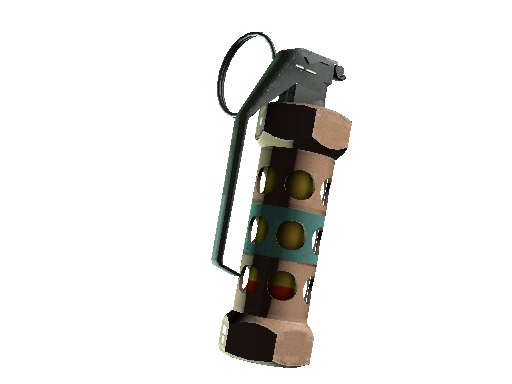Hydra Tech Insights
Stay updated with the latest in technology and gaming.
Flashing Your Enemies: Surprise Tactics for CSGO Flashbangs
Unleash chaos in CSGO with clever flashbang tactics! Master the art of surprise and outsmart your foes. Click to dominate!
Mastering the Art of the Flashbang: Tips and Tricks for CSGO
Mastering the Art of the Flashbang in CS:GO can significantly enhance your gameplay and provide a tactical edge over your opponents. First and foremost, understanding the mechanics of the flashbang is crucial. When thrown, a flashbang emits a blinding light and sound that can disorient enemies. To utilize it effectively, always consider positioning and timing. A good rule of thumb is to throw the flashbang from cover so you can capitalize on the disorientation it causes. This allows you to engage enemies while they are still recovering from the effects of the flash.
Another important tip is to practice your throwing techniques. There are several methods to throw a flashbang, including the standard throw, underhand throw, and jump throw, each serving different tactical purposes. For example, a well-timed jump throw can help you toss a flashbang over a wall, catching opponents off guard. Make use of community maps specifically designed for practice; these can help you learn effective angles and trajectories. Ultimately, mastering these techniques will greatly increase your effectiveness when deploying flashbangs in various scenarios throughout your matches.

Counter-Strike is a popular first-person shooter that emphasizes teamwork and strategy. One of the most iconic maps in the game is Mirage, where players can benefit from understanding mirage callouts to communicate effectively with their teammates. Mastering the various callouts can significantly enhance a team's performance in matches.
Common Mistakes Players Make with Flashbangs in CSGO
One of the most common mistakes players make with flashbangs in CSGO is failing to consider their positioning when throwing the grenade. Many players throw flashbangs without taking into account their own team's location, often resulting in blinding their own teammates instead of the enemy. This can be particularly detrimental during critical moments in a match where coordination is key. Players should always communicate with their team and plan their throws, ensuring that everyone is aware of potential blind spots and aiming to maximize the effectiveness of their utilities.
Another prevalent mistake is improper timing when using flashbangs. Players often throw them too early or too late, missing the opportunity to catch their opponents off guard. For example, throwing a flashbang just as your team is about to engage can ensure that the enemies are blinded and unable to react. Conversely, waiting until after you've already engaged can result in wasted potential, as the enemies may already be aware of your presence. Learning to read the flow of the game and knowing when to deploy flashbangs can significantly improve your team's chances of success.
How to Use Flashbangs to Turn the Tide in CSGO Matches
In CSGO, the effective use of flashbangs can dramatically shift the momentum of a match. A well-timed flashbang can disorient multiple enemies, giving your team the crucial seconds needed to push forward or secure a strategic position. To maximize its impact, consider using flashbangs in coordination with your team's movements. For example, if you're planning to execute a rush on a bombsite, throw a flashbang over the wall or around a corner just before your team makes its entrance. This tactic can blind unsuspecting opponents, allowing you to take them out swiftly and take control of the area.
Another important aspect of using flashbangs effectively involves understanding their trajectory and the environment. Flashbangs can bounce off walls and surfaces, creating opportunities to blind enemies who may be seeking cover. Familiarize yourself with key locations on maps like Dust II and Mirage to discover potential choke points where a well-placed flash can affect several players. Additionally, during gunfights, consider using flashbangs defensively to create space. When outnumbered, throwing a flash to limit the enemy's visibility can give you a chance to regroup or reposition, thus turning a dire situation to your advantage.